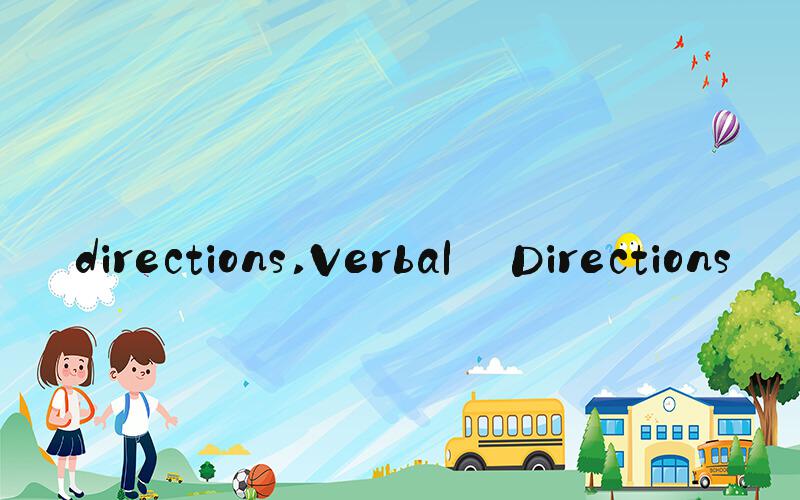 Introduction
IntroductionDirections are an essential aspect of everyday life. Whether it be navigating through a new city or following a recipe, directions play a crucial role in guiding individuals towards a desired outcome. In this article, we will explore the different types of directions and how they impact our lives.
Verbal DirectionsVerbal directions are a commonly used method for providing instructions. This type of direction involves using language to convey information to another person. For example, a teacher may provide verbal directions to their students on how to complete an assignment. The benefits of using verbal directions include the ability to clarify and provide additional information if necessary.
However, verbal directions can also be prone to misinterpretation or confusion, particularly if the person providing the directions does not communicate clearly enough. Therefore, it is important to ensure that instructions are clear and concise.
Written DirectionsWritten directions provide a visual representation of instructions. This can be in the form of a recipe, an instruction manual, or a map. The advantages of using written directions include the ability to refer back to them at a later time and the ability to provide more detail than verbal directions.
However, like verbal directions, written directions can also be confusing or misleading if they are unclear or incomplete. Therefore, it is crucial to ensure that written directions are easy to understand and follow.
Visual DirectionsVisual directions involve the use of images or videos to provide instructions. This type of direction is particularly useful for tasks that require hands-on work, such as assembling furniture. Visual directions allow individuals to see the steps in action and can make the instructions easier to follow.
However, visual directions may not be suitable for individuals who have visual impairments. Additionally, visual directions can be time-consuming to create and may require additional resources, such as cameras or graphic design software.
Impact of DirectionsDirections play a significant role in achieving desired outcomes in daily life. Clear and concise directions can help individuals to complete tasks efficiently and with minimal errors. On the other hand, unclear or confusing directions can lead to frustration, wasted time, and even potential safety hazards.
Directions also play a crucial role in industries such as engineering, construction, and healthcare. In these fields, accurate directions are essential for ensuring the safety of individuals and the success of projects.
The Future of DirectionsWith the advancements in technology, directions are becoming more advanced and accessible. For example, GPS technology has revolutionized the way we navigate through cities and has made it easier to travel to unfamiliar places.
Additionally, virtual reality and augmented reality technology have the potential to revolutionize the way we receive and follow directions. These technologies can provide immersive and interactive experiences that allow individuals to learn and complete tasks in a more engaging and efficient way.
ConclusionDirections play a crucial role in our daily lives. Whether it be verbal, written, or visual, directions are essential for achieving desired outcomes and creating safe and effective environments. As technology continues to evolve, directions are likely to become even more advanced and accessible, making it easier for individuals to navigate through the complexities of modern life.
